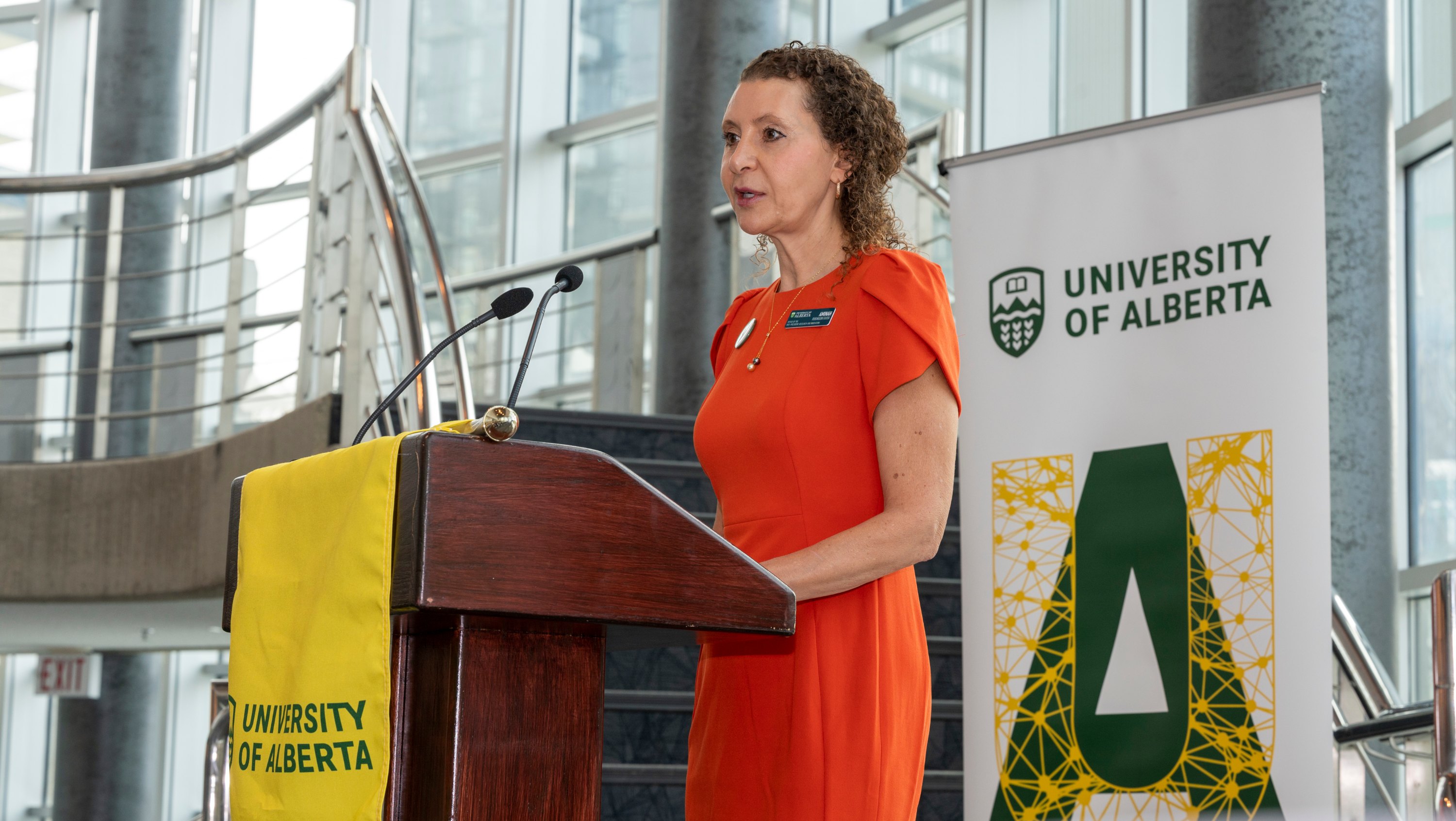The University of Alberta has mapped out a five-year strategy to maximize the impact of its research and innovation in solving pressing challenges at every level from local to global.
“Our institution has significant and extensive research capacity to bring to bear on grand challenges that are vital to the well-being of our societies, economy and environment,” says Aminah Robinson Fayek, vice-president of research and innovation.
“This strategic plan is a roadmap toward a future in which our university’s leadership and contributions have an even greater impact on the world.”
Forward with Purpose: A Strategic Plan for Research and Innovation — the first pan-institutional plan of its kind for the U of A — declares the university’s ambition “to be a leader in knowledge generation and translation, inspiring solutions to grand challenges of local, provincial, national and global importance through creativity, research, innovation and higher education.”
To that end, the plan lays out four main goals, each with specific objectives, actions to achieve each objective and key indicators of success. The goals call for focusing on people and nurturing talented researchers, supporting them with top-quality tools and infrastructure, strengthening a culture of research across the U of A, and enhancing the university’s leadership on the global stage.
Among the key indicators, the strategy calls for increasing annual sponsored research revenue to $650 million by 2028 and $750 million by 2033. The objectives also include launching an Innovation Fund to invest in startups, and increasing spinoff companies, startups, licences and inventions being adopted by external partners by 35 per cent within five years. The Innovation Fund was launched on Oct. 17. Other indicators include increasing open-access publications by 50 per cent and increasing Indigenous-led grant applications by 10 per cent by 2028.
To focus efforts toward achieving these goals, the research and innovation strategy highlights three areas in which the university has demonstrated sustained global excellence: energy and environment, artificial intelligence, and health and well-being.
It also identifies three areas in which the university is primed for growth: Indigenous research, agriculture and food, and social transformations.
According to the strategy, focusing on these areas puts the university in the best position to capitalize on opportunities arising from its unique strengths, such as the first college structure of its kind in Canada, which affords more opportunities for collaboration across diverse disciplines.
These focus areas align directly with the U of A’s new overarching institutional plan, Shape: A Strategic Plan of Impact. Forward with Purpose also aligns with related institutional strategies such as the Braiding Past and Present: University of Alberta Indigenous Strategic Plan.
Robinson Fayek, who chaired the working group that developed Forward with Purpose, calls it “a collective effort of co-creation” based on two years of work including consultations with researchers, staff and students, as well as government, industry and community members.
Next steps for implementation include conducting annual progress reviews, reviewing the plan and focus areas after three years, developing an inclusive framework for assessing research impact, and supporting the U of A’s colleges, faculties, and centres and institutes as they develop their own strategic plans.
“This strategy provides our community with the freedom and flexibility necessary to pursue their specific research aspirations in the context of the university’s strategic vision,” says Robinson Fayek.
